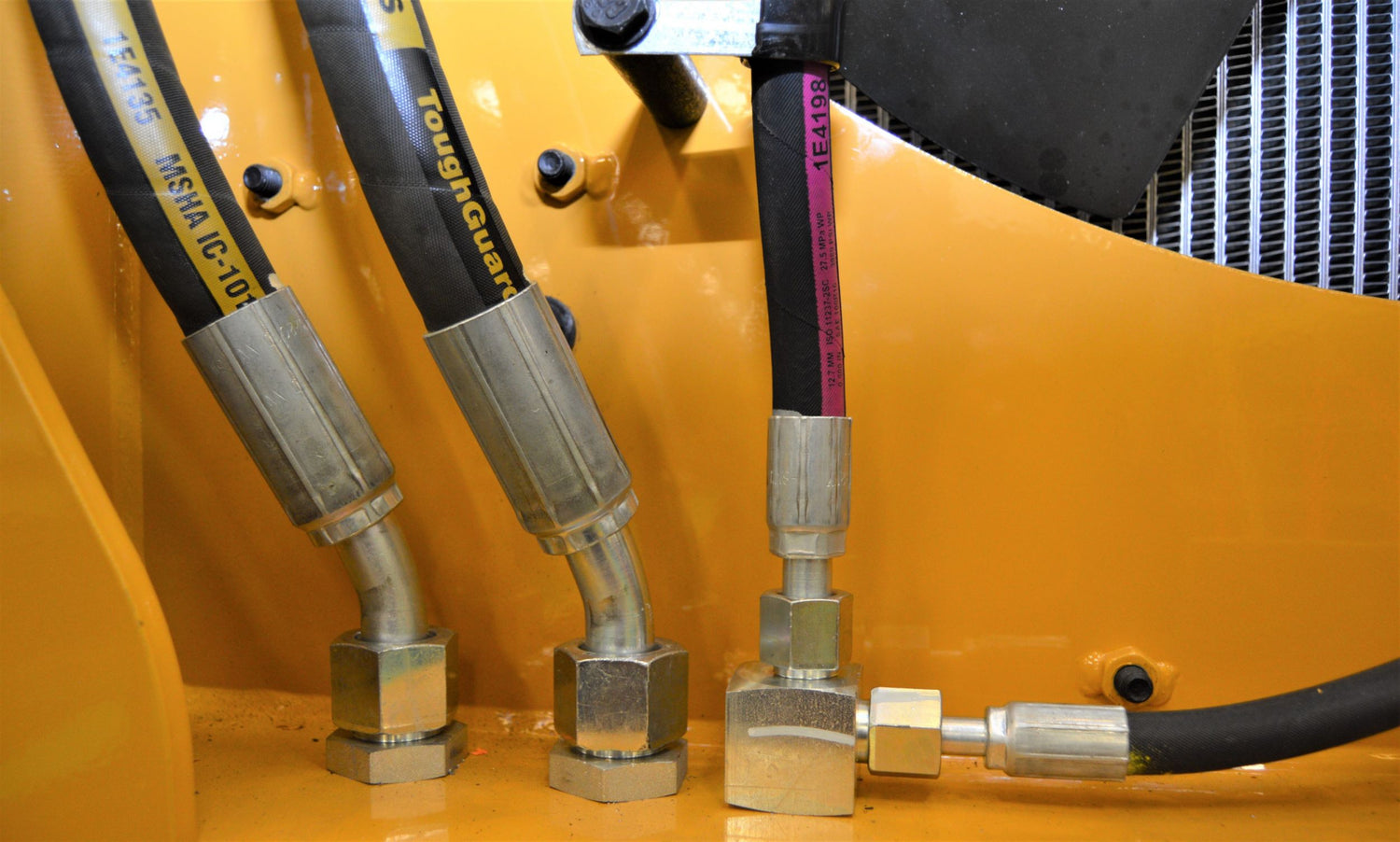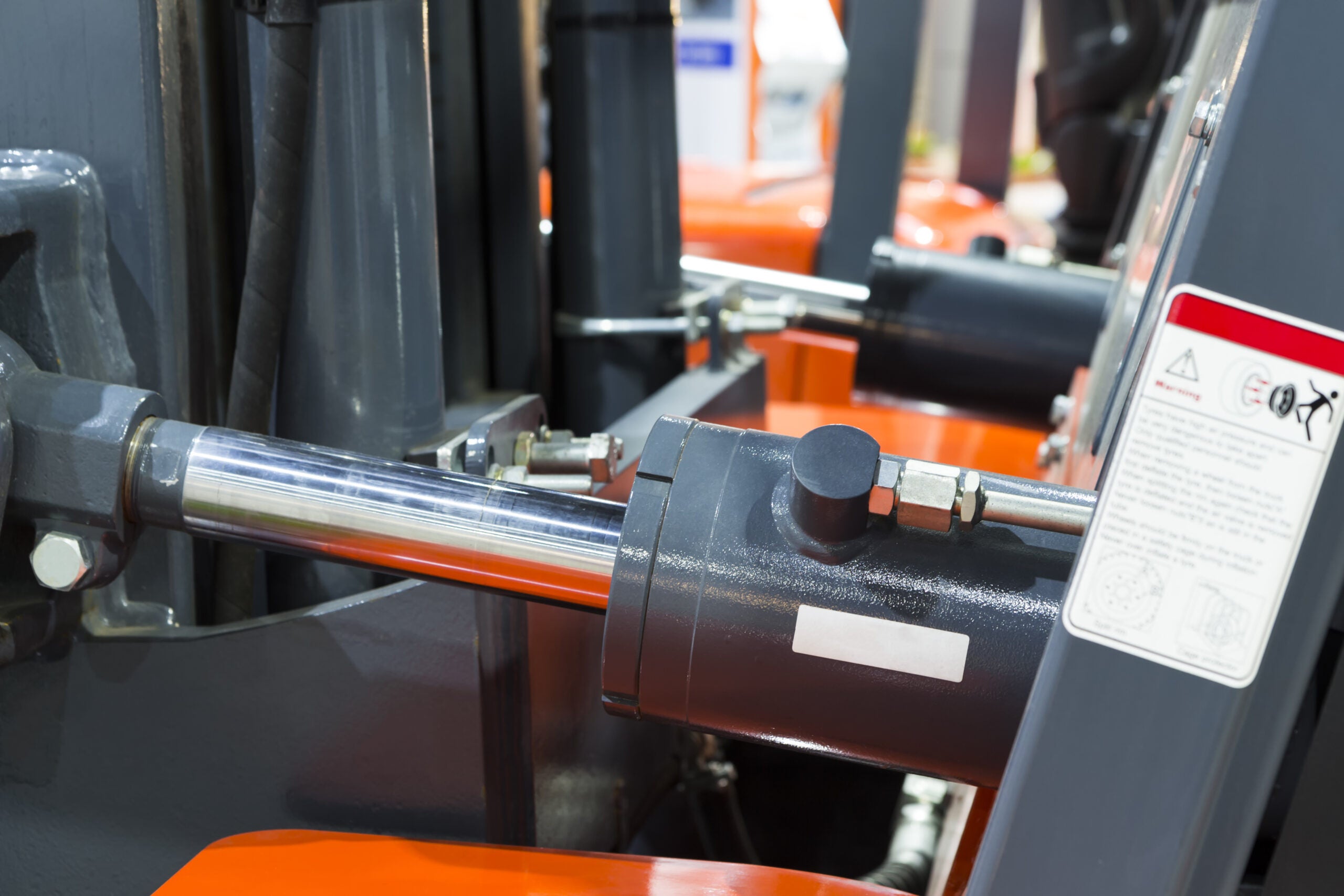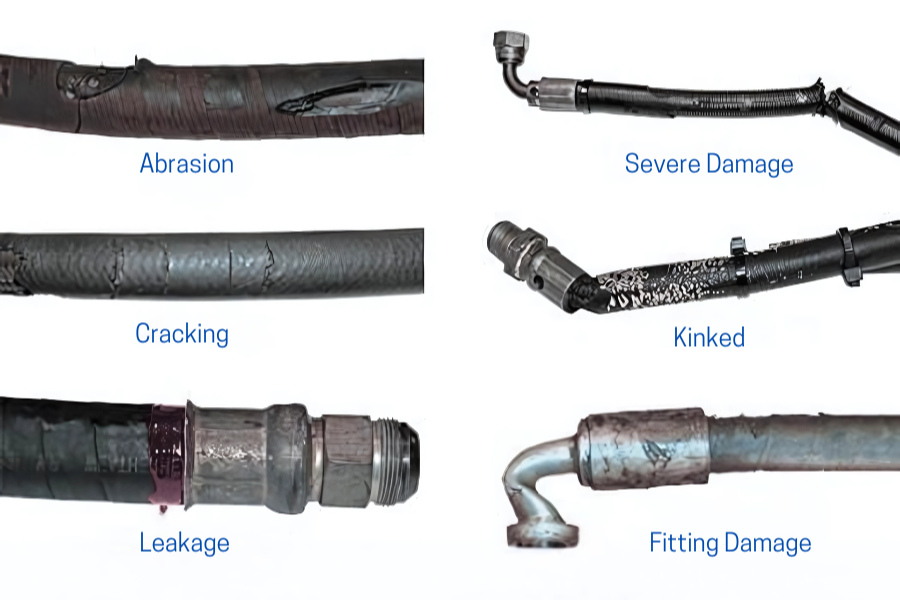Need Hydraulic Hose Help Now?
Fast, local repairs and inspections in Orlando, Tampa, Lakeland, and Raleigh-Durham.
Forklift Hydraulic Hose Repair & Prevention Guide
Tired of Unexpected Downtime? Let's Talk Forklift Hydraulic Hoses!
You know that gut-wrenching feeling when a forklift breaks down mid-shift? It's not just an inconvenience; it's lost productivity, missed deadlines, and a direct hit to your budget. Hydraulic systems are the unsung heroes of your forklifts, making all that lifting, tilting, and steering possible.
Experts consistently point to preventable hose problems as a top culprit for hydraulic system failures. These aren't just minor annoyances; they lead to costly emergency hydraulic hose repair and major disruptions. That's why we've put together this straightforward guide. Our goal? To arm you, the busy forklift fleet manager, with practical tips and strategies. We want to help you prevent those expensive headaches, keep your forklifts running longer, and boost your fleet's overall efficiency.
Ready to take control? To help you get a head start, we've created a free, comprehensive Forklift Hydraulic Inspection Checklist. You can download it right now and start pinpointing potential issues today: Download Your Free Inspection Checklist Here!
What You'll Learn in This Guide:
- The hidden dangers and true costs of forklift hydraulic hose failure
- Easy, money-saving inspection tips to spot problems early
- Common mistakes to avoid in hydraulic hose maintenance
- The top reasons why industrial hydraulic hoses fail
- How to pick the right replacement hydraulic hose and fittings
- When professional hydraulic hose repair is absolutely necessary
- Why on-site hydraulic service is a game-changer for your fleet
- Building a smart, proactive maintenance program for your hydraulics
Table of Contents
- The Hidden Dangers (and Costs!) of a Failing Forklift Hydraulic Hose
- Your Money-Saving Hydraulic Hose Inspection Plan
- Common Hydraulic Hose Maintenance Blunders (and How to Fix Them)
- The Top 6 Reasons Your Forklift Hydraulic Hoses Give Up
- Picking the Right Hydraulic Hose: It Matters!
- When It's Time to Say Goodbye: Replacing Forklift Hydraulic Hoses
- The Professional Way to Fix a Hydraulic Hose (Please Don't DIY This!)
- Why Our On-Site Hydraulic Service is a Game-Changer in Orlando & Raleigh-Durham!
- Building a Smart Maintenance Program for Your Forklift Fleet
- Your Burning Questions About Forklift Hydraulic Hoses: Answered!
The Hidden Dangers (and Costs!) of a Failing Forklift Hydraulic Hose
A blown hydraulic hose isn't just about a mess on the floor; it's a serious safety threat, a productivity killer, and a potential disaster for your team and property. When a hose gives out without warning, that high-pressure fluid loss can lead to some scary stuff:
- Sudden Loss of Control: Imagine a load dropping instantly, or steering going out. This can damage products or, much worse, seriously injure someone.
- Fire Risks: Hot hydraulic oil spraying onto hot engine parts, exhaust, or electrical wires? That's an instant fire hazard, leading to dangerous and destructive blazes.
- High-Pressure Injection Injuries: Even a tiny pinhole leak can spray fluid at thousands of pounds per square inch. This can easily penetrate skin… seek immediate medical attention.
- Sky-High Emergency Costs: Emergency repairs, rushed parts, and downtime add up quickly.
- OSHA & Safety Headaches: Neglect can lead to citations and increased scrutiny.
In busy environments like your warehouse or logistics yard, even a small leak can quickly turn into a massive failure—especially if it's ignored during routine checks. Spotting these issues early is truly your best defense.
Your Money-Saving Hydraulic Hose Inspection Plan
Putting a consistent inspection routine in place is your most powerful tool against hydraulic hose failures. Regular checks catch little problems before they become massive, expensive headaches.
Daily/Weekly Visual Checks (A Quick 5 Minutes Could Save You Thousands!)

- Leak Detection: Check for dampness, weeping, or hissing.
- Abrasion Points: Look for shiny spots and rubbing.
- Fitting Integrity: Inspect for rust, cracks, or weeping.
- Routing & Slack: Avoid twists/kinks; allow movement.
- Swelling/Blistering: A major red flag—replace immediately.
Monthly Deep Inspection
- Bend Radius: Compare to manufacturer specs.
- Internal Wear: Check fluid for particles/metal.
- Pressure Testing: By qualified techs only.
- External Contamination: Clean grime/chemicals.
- Guards & Clamps: Ensure protection is intact.
Quarterly/Annual Comprehensive Inspection
- Fluid Analysis, Temperature Mapping, Vibration Analysis, and Documentation Review by specialists.
Oops! Common Hydraulic Hose Maintenance Blunders (and How to Fix Them)
- Ignoring Small Leaks: Fix immediately; leaks don’t self-heal.
- Wrong Parts: Only OEM-grade/equivalent hoses & fittings.
- Environmental Damage: UV/ozone/chemicals accelerate wear.
- Fluid Contamination: Follow strict cleanliness plans.
- Poor Installation: Use certified techs and calibrated tools.
The Top 6 Reasons Your Forklift Hydraulic Hoses Give Up
1. Abrasion
Rubbing damages the cover; protect or reroute.
2. Excessive Heat
Keep clear of hot spots; use shields/wraps.
3. Improper Assembly
Bad crimps/mismatched fittings = blowouts.
4. Fluid Compatibility
Use compatible fluids only.
5. Hose Aging
Replace ~5 years or 1,500–2,000 hours.
6. Poor Routing
No kinks/twists; respect bend radius.
Picking the Right Hydraulic Hose: It Matters!
- Pressure Rating must meet/exceed system pressure.
- Temperature Range for fluid and ambient.
- Fluid Compatibility of inner tube.
- Size (ID) affects flow & efficiency.
- Flexibility/Bend Radius for your layout.
- Outer Cover for environment hazards.
Need a custom assembly? We’ve got you covered in Orlando and Raleigh-Durham.
When It's Time to Say Goodbye: Replacing Forklift Hydraulic Hoses
| Condition | Recommended Action | Why It's Critical |
|---|---|---|
| Surface cracking | Monitor/clean/re-inspect. | Early material aging. |
| Exposed reinforcement | Replace now. | High burst risk. |
| Fitting corrosion/damage | Replace now. | Seal integrity compromised. |
| Kinked/crushed | Replace now. | Flow restriction & stress. |
| Blistering/soft cover | Replace now. | Internal permeation—rupture risk. |
| Any visible leak | Investigate & repair/replace. | Signals larger issue. |
| Excessive swelling | Replace now. | Reinforcement compromised. |
| Fluid contamination | Service system fully. | Damages components. |
| Older than 5 years | Proactive replacement. | Age-related degradation. |
A Friendly Tip from Your Friends at AAA Forklifts
"Consistent, documented inspections prevent nasty surprises. Planned repair beats emergency breakdown every time."
The Professional Way to Fix a Hydraulic Hose (Please Don't DIY This!)
- Diagnosis of root cause.
- Exact spec matching (pressure/temp/ID/compatibility).
- Precision cutting & crimping with calibrated tools.
- Clean assembly to avoid contamination.
- Pressure testing & proper routing/torque on install.
Why Our On-Site Hydraulic Service is a Game-Changer for You in Orlando, Lakeland & Raleigh-Durham!
- Less Downtime—we come to you.
- Cost Savings—no towing or long waits.
- Convenience—stocked service vehicles, one-visit repairs.
- Expertise—certified techs on-site.
- Flexibility—great for big fleets and tough-to-move equipment.
Serving Orlando area (Ocala, Winter Haven, Lakeland, Tampa) and Raleigh-Durham.
Building a Smart Maintenance Program for Your Forklift Fleet
- Scheduled Inspections across intervals.
- Detailed Documentation for tracking & planning.
- Smart Fluid Management and analysis.
- Operator Training on early signs.
- Strategic Parts on hand for speed.
- Partner with Pros for diagnostics & PM.
Your Burning Questions About Forklift Hydraulic Hoses: Answered!
Q: So, how long do forklift hydraulic hoses usually last?
A: About 1,500–2,000 hours or roughly 5 years, depending on conditions and care.
Q: Can I just make my own hydraulic hose assemblies?
A: We strongly advise against it without certification and calibrated equipment—poor crimps and mismatched fittings cause failures.
Q: What are clear signs a hose is about to fail?
A: Leaks (even tiny), cracks/fraying, bulges/blisters, sluggish/jerky motion, or hissing sounds.
Q: What happens if a hose bursts during operation?
A: Instant loss of hydraulic function, dropped loads, steering issues, injury risk, fire hazards, and cleanup.
Q: What’s the rough cost to replace a hose?
A: Often $150–$400 before downtime; proactive maintenance is cheaper than emergencies.
Ready to Protect Your Forklift Fleet? Let's Talk!
Expert maintenance, diagnostics, and fast hydraulic hose repair—on-site across Central Florida and Raleigh-Durham.
- Full inspections & diagnostics
- OEM-grade hose replacement & custom assemblies
- Cylinder, pump, and hydraulic equipment repair
- Mobile on-site service—cut downtime fast
- Tailored maintenance programs
- 24/7 Emergency Repair
Keep your forklifts at their best. We’re just a call away.




Leave a comment
This site is protected by hCaptcha and the hCaptcha Privacy Policy and Terms of Service apply.